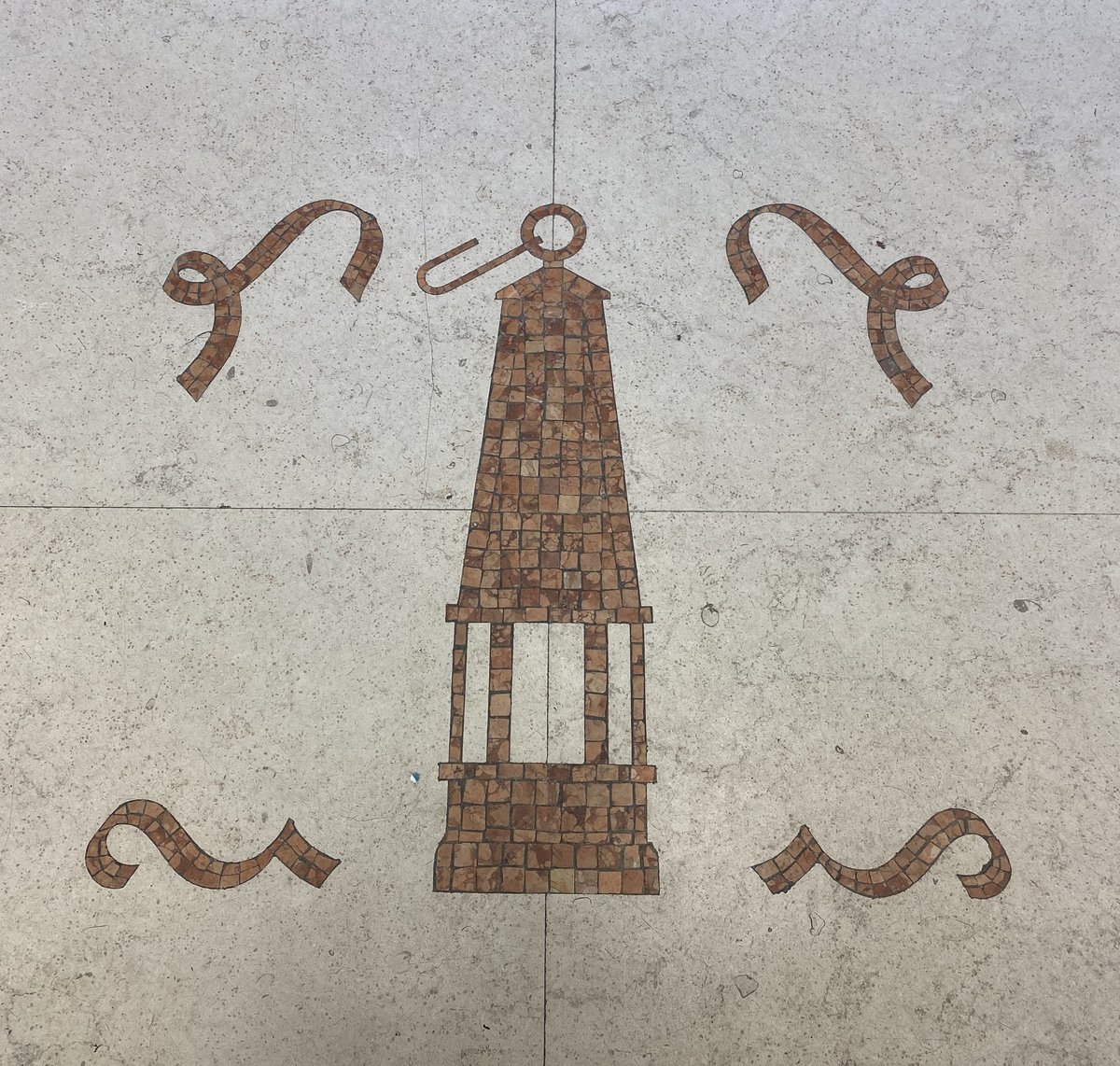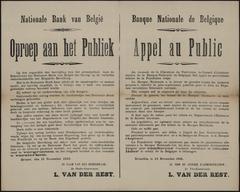
National Bank of Belgium Museum: Visiting Hours, Tickets, and Historical Significance in Brussels
Date: 14/06/2025
Introduction
Located in the heart of Brussels, the National Bank of Belgium (NBB) stands as a testament to the country’s economic evolution and architectural grandeur. Since its establishment in 1850, following Belgium’s independence, the NBB has played a central role in shaping the nation’s financial landscape, from issuing currency to navigating pivotal moments like World War II and the transition to the euro. Today, the NBB not only serves as Belgium’s central bank but is also home to a dynamic museum that brings the story of money, banking, and economic policy to life for visitors of all ages (NBB History; Museum Building History).
Housed within a remarkable 19th-century building that blends neogothic, classical, and modernist styles, the museum showcases a diverse collection of coins, banknotes, medals, and interactive exhibits. Its central location near Brussels Central Station and landmarks such as the Grand Place makes it an accessible destination for both casual tourists and economic history enthusiasts. Admission is free, and the museum is renowned for its engaging, accessible displays (NBB Museum; Numista).
This guide provides essential details about visiting hours, ticketing, guided tours, accessibility, and tips for making the most of your visit to this significant Brussels landmark. Whether you’re intrigued by architecture, economic history, or seeking a family-friendly cultural experience, the National Bank of Belgium Museum offers a memorable journey through Belgium’s financial heritage (visit.brussels).
Table of Contents
- Introduction
- The National Bank of Belgium: History and Significance
- Visiting Information: Hours, Location, and Admission
- Museum Experience: Exhibitions and Highlights
- Accessibility and Visitor Amenities
- Guided Tours and Educational Resources
- Nearby Attractions and Practical Tips
- Frequently Asked Questions (FAQ)
- Conclusion and Further Resources
The National Bank of Belgium: History and Significance
Foundation and Development
Established in 1850, the NBB was created to provide Belgium with a stable monetary authority during a transformative period. Over the decades, it has been instrumental in issuing banknotes, managing currency, and serving as a lender of last resort, evolving its functions in response to major historical events (NBB History).
Architectural Heritage
The museum is housed in a landmark building designed by Désiré De Keyser in 1872. Its eclectic architecture blends classical, neogothic, and modern elements, featuring impressive banking halls and luminous spaces that reflect the institution’s authority and transparency. Extensive renovations between 2004 and 2009 preserved its architectural integrity while enhancing visitor comfort (Museum Building History).
Economic and Cultural Impact
The NBB has navigated Belgium through crucial periods, from the challenges of the World Wars to European integration and the adoption of the euro. Today, it stands as a symbol of financial stability and a bridge between Belgium’s economic history and its future within the European Union.
Visiting Information: Hours, Location, and Admission
Museum Hours
- Open: Monday to Friday, 9:00 AM – 5:00 PM
- Closed: Weekends and public holidays
Admission and Tickets
- Admission: Free for all visitors
- Tickets: Not required; group guided tours require advance booking
Location and Access
- Museum Address: Rue Montagne aux Herbes Potagères/Warmoesberg 57, 1000 Brussels
- Main Bank Address: Boulevard de Berlaimont 14, 1000 Brussels
- Public Transport: Short walk from Brussels Central Station; accessible via Metro lines 1 and 5 (Gare Centrale/Centraal), Tram lines 92 and 93, and several bus lines (Museum Location)
- Parking: Limited nearby; public transport is recommended for convenience
Museum Experience: Exhibitions and Highlights
Permanent Exhibitions
- Role of the National Bank: Interactive displays explain central banking functions, including currency issuance, inflation management, and financial stability.
- Evolution of Money: Explore the journey from barter systems to digital payment, featuring rare coins, banknotes, and monetary artifacts.
- Money in Society: Discover how money shapes daily life through objects, documents, and multimedia presentations (Museum Exhibition Details).
Collection Highlights
- Historic Coins and Banknotes: Belgian and international currencies, including rare pieces from significant economic periods.
- Medals and Commemorative Pieces: Objects marking key moments in Belgian and European history.
- Commodity Money: Early trade items such as shells and metal tokens.
- Money-Changer’s Table: Historical furniture and tools of the banking trade.
- Interactive Features: Touchscreens, multimedia games, and virtual tours enhance engagement (Numista).
Architectural Features
The building itself is a highlight, with grand halls, restored facades, and a luminous central banking hall featuring thousands of translucent ceiling tiles.
Accessibility and Visitor Amenities
- Physical Accessibility: Fully accessible to visitors with reduced mobility; ramps and accessible restrooms are available.
- Audio Guides: Free audio guides and brochures in English, French, and Dutch (compatible with hearing aids).
- Cloakroom: Secure storage for coats and bags.
- Restrooms: Available on site.
- Family-Friendly: Interactive exhibits and activities suitable for children.
Guided Tours and Educational Resources
- Self-Guided Visits: Audio guides and multilingual information panels enhance self-exploration.
- Expert-Led Tours: Free for groups (10+), tailored to specific interests (e.g., economic history, architecture). Advance booking required (Museum Booking).
- Educational Materials: Infographics, workshops, and multimedia resources support school visits and lifelong learning (NBB Statistics).
Nearby Attractions and Practical Tips
- Grand Place: Iconic UNESCO-listed central square
- Museum of the City of Brussels: Local history and art
- Galeries Royales Saint-Hubert: Historic shopping arcade
- Cathedral of St. Michael and St. Gudula: Notable Gothic architecture
Tips:
- Visit on weekdays to avoid closures and larger crowds.
- Use audio guides for a richer, self-paced experience.
- Allocate 1.5–2 hours for a full visit.
- Check the official website for updates on special exhibitions and events.
- Combine your visit with other central Brussels attractions for an in-depth cultural tour (Lonely Planet).
Frequently Asked Questions (FAQ)
Q: What are the National Bank of Belgium Museum’s opening hours?
A: Monday to Friday, 9:00 AM to 5:00 PM; closed on weekends and public holidays.
Q: Is there an admission fee?
A: Admission is free; no tickets are needed.
Q: Are guided tours available?
A: Yes, for groups of 10 or more with advance booking.
Q: Is the museum accessible for people with disabilities?
A: Yes, the museum is fully accessible.
Q: Can I take photos in the museum?
A: Photography is generally allowed, but check signage for any restrictions.
Q: What languages are supported?
A: Exhibits and guides are available in English, French, and Dutch.
Conclusion and Further Resources
The National Bank of Belgium Museum is a must-visit for anyone seeking to explore the intersections of economics, history, and architecture in Brussels. With free admission, interactive exhibitions, and a central location near other major attractions, it offers a rewarding and educational experience for visitors of all backgrounds. Plan your visit ahead by checking the official website for the latest updates, exhibition news, and booking guided tours. Enhance your exploration with the Audiala app for audio guides and curated walking tours, and follow the museum’s social media for tips and event announcements.
Make the most of your Brussels adventure by starting your journey at the National Bank of Belgium Museum—a gateway to understanding Belgium’s financial heritage and its enduring influence on Europe.




































































































































